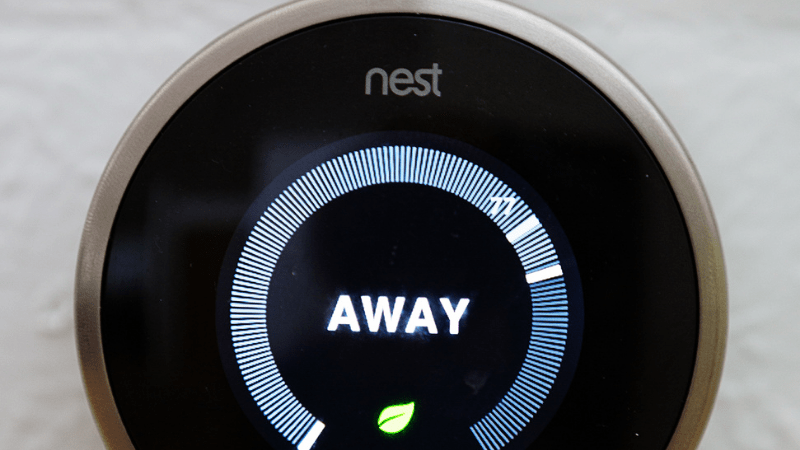Can I Calibrate My Nest Thermostat?
When you buy through our links, we may earn an affiliate commission.
Nest Thermostats are the most reliable smart thermostats of its time. It is not unlikely that due to reasons your Nest Thermostat may not be reading temperatures within your home correctly. Much like everything else in life, Nest Thermostats are not perfect and sometimes need calibrating in order to run smoothly. So, can you calibrate your Nest thermostat?
You can and should calibrate your Nest Thermostat when necessary. Doing so will help ensure that it’s providing you with accurate readings. However, there are a few steps to calibrating your
Keep reading to learn about the reasons causing your Nest Thermostat to read incorrectly and how to calibrate your Nest Thermostat.
How To Calibrate Your Nest Thermostat
If you believe your thermostat is still good and is simply providing inaccurate readings, here are the steps to calibrate your Nest Thermostat:
- Ensure you have a low-voltage HVAC. If you have a high-voltage HVAC, Nest Thermostats will not work with the HVAC.
- On your Nest Thermostat, go to settings.
- Go to reset settings and select restart.
- Once the restart is complete, perform a factory reset.
Once you have performed a factory reset on your Nest Thermostat, your thermostat will be back to default or factory settings. If you complete the steps for calibration and your thermostat is still reading incorrectly, you can contact Nest Support for further assistance.
Calibrating Because of Incorrect Readings
There are varying reasons why your Nest Thermostat may not be reading temperatures correctly from something as simple as direct sunlight shining on your thermostat to something more serious as your Nest Thermostat going out. The following reasons are some of the most common for why your Nest Thermostat may be reading incorrectly:
- Direct sunlight
- Location
- Cleanliness
- Thermostat going out
Continue reading to get more information on how these reasons cause incorrect temperature readings and how to prevent or fix these problems.
Direct Sunlight
When you stand in direct sunlight, you tend to get warmer than someone who isn’t standing directly in the sunlight. This same situation can happen with your thermostat. If the sun is directly shining on your Nest thermostat, it is not uncommon that your thermostat will read higher temperatures in your home than if it was in a less lit-up part of the home. Sometimes this is unavoidable given the seasons of the year.
If it is summertime, your thermostat may read higher if the sunlight is directly hitting the thermostat and therefore causing the thermostat to read that it is hotter in your home than it may actually be. If it is wintertime, the heater may not run long enough to heat the home and cause the heating to shut down prematurely.
In these cases, it is best to monitor your thermostat more closely to avoid the hassle of calibrating your system and, or, higher utility bills.
Location Of Your Thermostat
Determining the best location for your thermostat is the one of the most important steps when installing your system to avoid inaccurate temperature readings.
If your thermostat is too close to appliances that generate heat or near the kitchen in your home, this can cause the thermostat to read incorrectly much like direct sunlight causes. Ensure that the placement of your thermostat is out of temperature reach of these appliances or areas that generate heat.
Similar to direct sunlight and heat-generating appliances, if the thermostat is located too close to vents in your home this may also cause your thermostat to read incorrectly. If the thermostat is placed near a window, door, or air vent, the draft caused by these can create an inaccurate reading of temperature. Ensure your thermostat is centrally located, but all out of distance from these causes as best you can to get your most accurate reading.
Most people put their thermostats in a central hallway of the home thinking this will create the most balanced temperature readings. Although this is common and not the worst place to put your thermostat, the best place to put your thermostat is in a commonly “lived-in” room. This should create the most balanced and accurate temperature readings.
Cleanliness Near Your Thermostat
This may be a silly or common knowledge reason to mention, but it is important to keep your thermostat clear of dirt and dust. Dust or dirt particles can build up on your thermostat sensors and cause inaccurate readings. Daily or weekly dustings of your thermostat should be common practice to avoid this.
Thermostat Going Out Or Bad
If your thermostat is going out or is bad, there is no need to calibrate the Nest Thermostat. There may be an issue with the actual thermostat that only an HVAC can fix. In this event, hopefully you’re still under warranty or this is still a fairly new thermostat and you can receive a replacement thermostat at no charge.
Conclusion
You can calibrate your Nest thermostat with the instructions provided above, but it’s also important to understand that the thermostat may be reading inaccurately due to other circumstances such as location, cleanliness, or reaching the lifespan of your thermostat.

